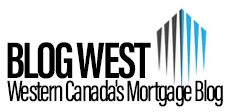
Mortgages are one of the most important decisions you’ll make when buying a home. It’s important to understand the difference between the various types of mortgages available in Canada before deciding which one is right for you. In this article, we will discuss the differences between conventional, high-ratio and low-ratio mortgages so that you can make an informed decision when it comes to financing your home.
A conventional mortgage is the most common type of mortgage in Canada. It typically requires a minimum of 20% down payment and offers competitive interest rates. This type of mortgage is ideal for people who can afford the down payment and have a good credit score. It’s also the most flexible type of mortgage, allowing borrowers to make prepayments or pay off their mortgage early without penalty.
High-ratio mortgages are another popular option in Canada. These types of mortgages require a down payment of less than 20%, usually between 5% and 10%. This type of mortgage is ideal for first-time home buyers or those who don’t have a lot of money saved up for a down payment. The downside of high-ratio mortgages is that they usually have higher interest rates, and they require mortgage insurance.
Finally, low-ratio mortgages are a unique type of mortgage in Canada. These types of mortgages require no down payment or very little down payment (typically less than 10%). Low-ratio mortgages are ideal for those who don’t have a lot of money saved up for a down payment or for those who want to keep their monthly payments low. The downside of low-ratio mortgages is that they typically have higher interest rates, and they require mortgage insurance.
It’s important to understand the differences between conventional, high-ratio and low-ratio mortgages before making a decision. Each type of mortgage has its own advantages and disadvantages, so it’s important to consider all of them before making a final decision. It’s also important to shop around and compare different lenders to find the best deal and the lowest interest rate. If you are looking for a home in the Calgary area, we recommend Mortgages For Less as a top mortgage lender choice. With over 15 years experience helping Calgary home buyers get the financing they need, we highly recommend Josh and his Calgary Mortgages For Less team. If you are looking for a highly qualified, award winning mortgage broker in Victoria BC please contact Kyle Scott owner and head broker at Landmark Mortgages.
No matter which type of mortgage you choose, it’s important to make sure that you can afford the monthly payments. If you don’t have a good handle on your finances and budget, it’s best to consult with a financial advisor to make sure that you make a wise decision when it comes to financing your home.
























